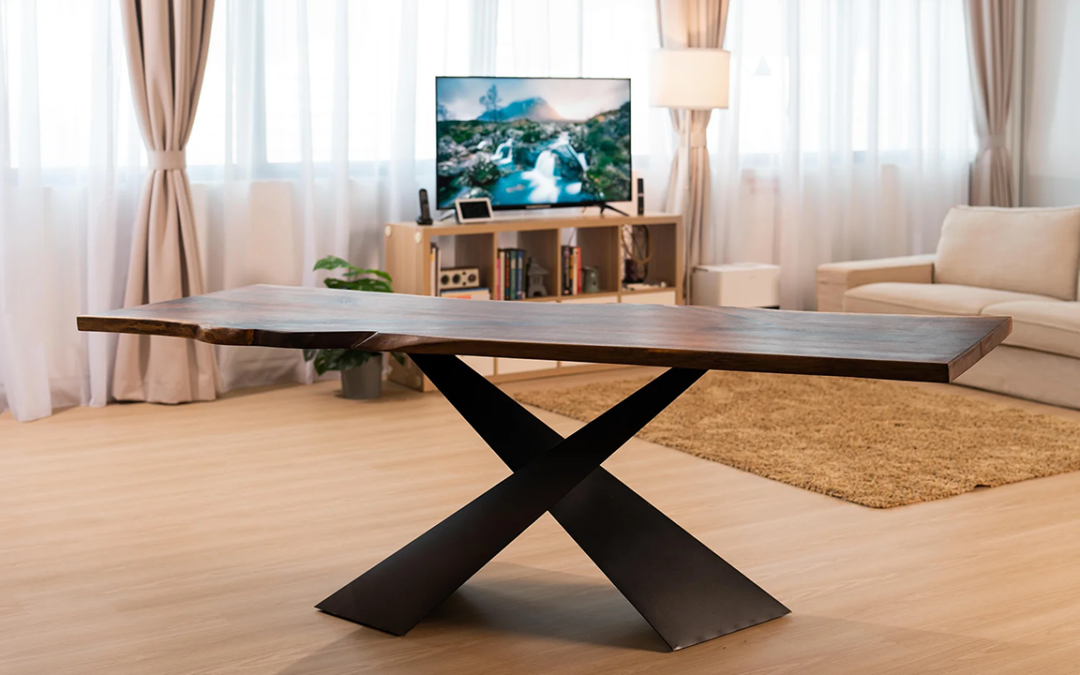Unique Dining Room Table Legs to Transform Your Eating Location
Unique Dining Room Table Legs to Transform Your Eating Location
Blog Article
A Thorough Check Out Table Leg Styles: Finding the Suitable Match
Choosing the ideal eating table leg style is vital for both aesthetic appeal and practical functionality. Traditional 4 legs offer ageless elegance and stability, while the pedestal base provides enhanced legroom and a modern appearance. For those with larger tables, trestle legs ensure durable assistance, whereas hairpin legs introduce a mid-century modern vibe with their minimal layout. The x-shaped legs blend contemporary design with enhanced stability. Each of these options brings unique benefits, making the selection greater than just a matter of preference. Explore better to discover which design flawlessly complements your eating area and way of life.
Traditional 4 Legs
Among the numerous kinds of eating table leg designs, the traditional four-leg design stays a classic selection for several houses. This classic setup supplies an unified blend of functionality and visual appeals, making it a seasonal favorite. 4 legs provide well balanced assistance, making sure the table continues to be steady and with the ability of bearing considerable weight. This is particularly helpful for families that frequently hold big events or use their table for multiple functions, such as work or crafting.
From a visual viewpoint, the typical four-leg style can be conveniently adjusted to different interior styles. Whether crafted from wood, metal, or a mix of products, these legs can be intricately sculpted, sleek and minimalistic, or anything in between. Their adaptability enables them to complement both rustic and contemporary settings effortlessly.
In addition, the straightforward framework of the four-leg style promotes convenience of motion and positioning within an area. Unlike even more facility bases, this style reduces obstructions, supplying ample legroom for restaurants. In recap, the standard four-leg eating table leg design marries withstanding sophistication with useful capability, making it an astute choice for those seeking both kind and feature in their dining furniture.
Pedestal Base
Typically commemorated for its sophisticated and space-efficient design, the stand base is a notable option to the typical four-leg arrangement in dining table leg styles. This distinctive base generally features a single main column supporting the table top, which can differ in form, from ornately carved timber to smooth, modern steel. Among the key advantages of the stand base is its ability to make best use of legroom and seating flexibility. Without corner legs, diners are managed higher freedom of movement, making it an optimal choice for round and oblong tables that advertise more intimate and comprehensive events.
The main column itself provides a canvas for intricate styles and creative expressions, including an element of aesthetic passion underneath the table. In summary, the pedestal base integrates functionality with design, making it a fine-tuned and functional alternative for diverse eating settings.
Trestle Legs
Trestle legs give a robust and timeless structure for dining tables, defined by their straight cross-bracing and sturdy assistance beams. Stemming from middle ages times, this design has evolved yet retained its vital framework, making it a seasonal fave in both conventional and modern setups. The central trestle light beam, typically sustained by two or more upright articles, offers remarkable security, permitting larger table lengths without the requirement for additional legs.
A significant advantage of trestle leg tables is the adequate legroom they offer. Unlike tables with four corner legs, the absence of blockages at the table's sides supplies unobstructed area for chairs and diners, over here boosting convenience and availability. This makes trestle tables excellent for accommodating bigger gatherings, whether in a dining-room or a reception hall.
The visual flexibility of trestle legs is significant. Offered in a range of materials such as timber, metal, and composite, they can be ended up to complement a variety of indoor designs. From rustic farmhouse to smooth modern-day designs, trestle legs can be personalized to fit private preferences. Their long-lasting allure and practical benefits make trestle legs a compelling option for those looking for both design and usefulness in their table.
Barrette Legs

The allure of barrette legs hinges on their simpleness and flexibility - dining room table legs. Available in a variety of materials, consisting of steel and brass, they can be finished in various shades to complement various interior styles. Whether coupled with a rustic wooden tabletop or a contemporary glass surface area, barrette legs effortlessly mix capability with a touch of vintage visit this website beauty
Longevity is one more remarkable attribute of hairpin legs. In spite of their fragile look, these legs are engineered to bear substantial weight, guaranteeing the table continues to be stable and secure. Furthermore, they are reasonably simple to set up, making them a preferred selection for DIY fanatics and expert furnishings makers alike.
X-Shaped Legs

Built from materials such as steel, wood, or a mix of both, X-shaped legs can be customized to match numerous layout choices. Steel legs usually lend a streamlined and commercial feel, suitable for loft-style apartment or condos and contemporary dining areas.
In addition, the design behind X-shaped legs makes certain also weight circulation, lessening the danger of tottering and improving resilience. This makes them particularly appropriate for larger table that require additional assistance. Basically, X-shaped legs blend sensible design with modern appearances, making them an ageless choice for varied eating settings.
Final Thought
A detailed understanding of eating table leg designs discloses the distinctive attributes and benefits of each design. Traditional four legs supply security and timeless appeal, while stand bases supply legroom and a streamlined look. Trestle legs make certain robust assistance for bigger tables, and barrette legs present a mid-century modern aesthetic. X-shaped legs combine contemporary layout with enhanced security. Choosing the suitable leg style makes sure both functional and visual satisfaction in any kind of dining room.
Report this page